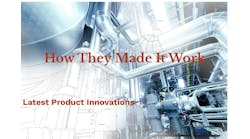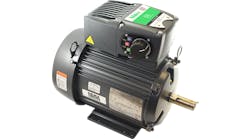Adjustable speed drives are well-known but often misunderstood because little attention is paid to the system as a whole. Note I used the terminology “adjustable speed drives” (ASDs) and not “variable frequency drives” (VFDs). Most engineers associate speed changes with an inverter-based VFD. That’s true in most applications, but in the process industries we have a significant amount of steam demand that allows us to deploy back-pressure, extraction and condensing steam turbines. These turbines are inherently ASDs and can accommodate shaft-horsepower and process-flow-rate demand very efficiently. I’ll cover steam turbine drives specifically in a future column, but for now, just realize that we have several options to adjust operating speed of rotating equipment.
So why should we be interested in adjusting the speed of any rotating equipment? The answer is simple — we design and build processes and units for a certain specified condition. At these design operating conditions, when the system is started for the first time, the system works at its optimized configuration. However, as time goes on, processes change, demands alter and our system needs to adjust to accommodate the off-design and the “new normal” operating conditions. As engineers, we also over-design our systems by using safety factors to compensate for any shortcomings due to equipment or oversights. Lastly, we design for reliability of operations and redundancy and that should never be sacrificed. Hence, a strong need exists to control our systems at their optimized operation over the range of operating conditions.
Less than a year ago, a very interesting two-part series in Energy Saver discussed optimizing electrical systems (see, “Optimize Electrical Systems, Part I and Part II. It highlighted some options to adjust electric motor speed. Centrifugal machines, such as pumps, compressors and fans, are energy-intensive rotating equipment and follow the cubic law relationship between flow and the power needed. Because flow is proportional to the speed of the rotating equipment, this cubic law relationship applies directly to speed and also power. Hence, if speed is reduced to 80% of operating conditions, the power demand is reduced to 51.2% of the operating shaft power.
The most common methodology for controlling flow is to operate the rotating equipment at a constant speed and regulate the flow required by a restriction mechanism (throttle valve, damper) or a recirculation mechanism (bypass valve). This incurs a significant energy loss while overcoming the restriction or in recirculating the fluid. Adjusting the speed of the rotating equipment to a level that provides the necessary flow will eliminate almost all of this energy loss. The rotating equipment’s actual performance curves should be obtained from the equipment manufacturer to understand constraints and minimum and maximum operating speeds.
Next, we need to understand the system curve — or more importantly, the difference between static head and dynamic (frictional) head. Every process is unique and will have its own system curve. The intersection of the system curve and the equipment’s performance curve is the operating point. The cubic law relationship works very well when all the head developed by the equipment is dynamic — purely frictional — such as in closed-loop configurations. But as the static head increases, a time will come when the rotating speed can no longer be reduced even though the flow required warrants a speed reduction. This is because the system static head needed is high enough that the rotating equipment can’t develop it at that lower speed. Avoid such misunderstandings and misapplications at all costs.
So in summary, walk through the plant and look for all those throttled valves, recirculating flows, etc. and ask yourself, Are any of them a good fit for adjustable speed drives? Then, complete additional due diligence by taking a systems approach to implement ASDs using VFDs on electric motors or steam turbine drives. Remember, how you drive a car; press the accelerator for the speed needed. You don’t floor the pedal and control the car speed with the brake – isn’t that what is happening with fixed speed operation and control with a throttle valve?

